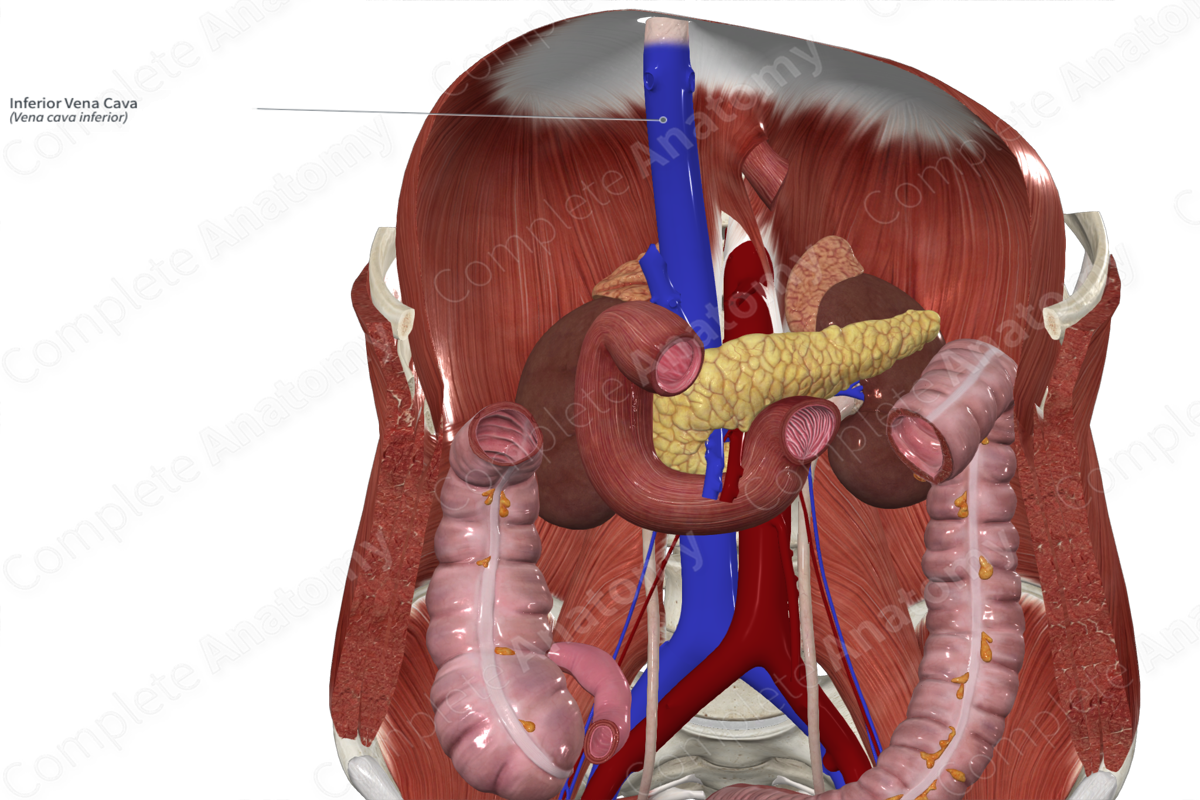
Quick Facts
Origin: Union of the right and left common iliac veins.
Course: Travels superiorly along the right side of the anterior aspect of the lumbar and lower thoracic vertebrae. Passes through caval opening of the diaphragm at the level of T8 vertebra, drains into the right atrium of the heart.
Tributaries: Right gonadal vein; both renal veins; right suprarenal vein; both inferior phrenic veins; hepatic veins.
Drainage: Structures of lower limbs, pelvis, perineum and abdomen.
Origin
The inferior vena cava is formed by the union of the right and left common iliac veins, at a point that lies anterior to the L5 vertebra and inferior to the bifurcation of the aorta.
Course
From its origin, the inferior vena cava travels superiorly along the right side of the anterior aspect of the lower lumbar vertebrae, their associated intervertebral discs and the anterior longitudinal ligament.
Along its course, it travels:
- anterior to the right crus of the diaphragm and right renal artery;
- posterior to the pancreas, duodenum, IVC groove of liver, hepatic portal vein, and the right gonadal artery (i.e., the right testicular artery in males, and right ovarian artery in females);
- to the right of the abdominal aorta.
At the level of the T8 vertebra, the inferior vena cava passes through the caval opening in the diaphragm, after which it ends by draining, almost immediately, into the right atrium of the heart.
Tributaries
Along its course, the inferior vena cava receives the following tributaries;
- the right gonadal vein (i.e., right testicular vein in males, right ovarian vein in females);
- both renal veins;
- right suprarenal vein;
- both inferior phrenic veins;
- the hepatic veins.
The hepatic veins (i.e., the right, intermediate, and left hepatic veins) connect the portal venous system with the systemic venous system.
The left suprarenal and left gonadal veins are both indirect tributaries of the inferior vena cava, where they both drain into the left renal vein first, which in turn drains into the inferior vena cava.
Structures Drained
The inferior vena cava is the largest vein in the body. Overall, the inferior vena cava and its tributaries provide venous drainage to the structures of the lower limbs, pelvis, perineum, and abdomen.
Learn more about this topic from other Elsevier products





